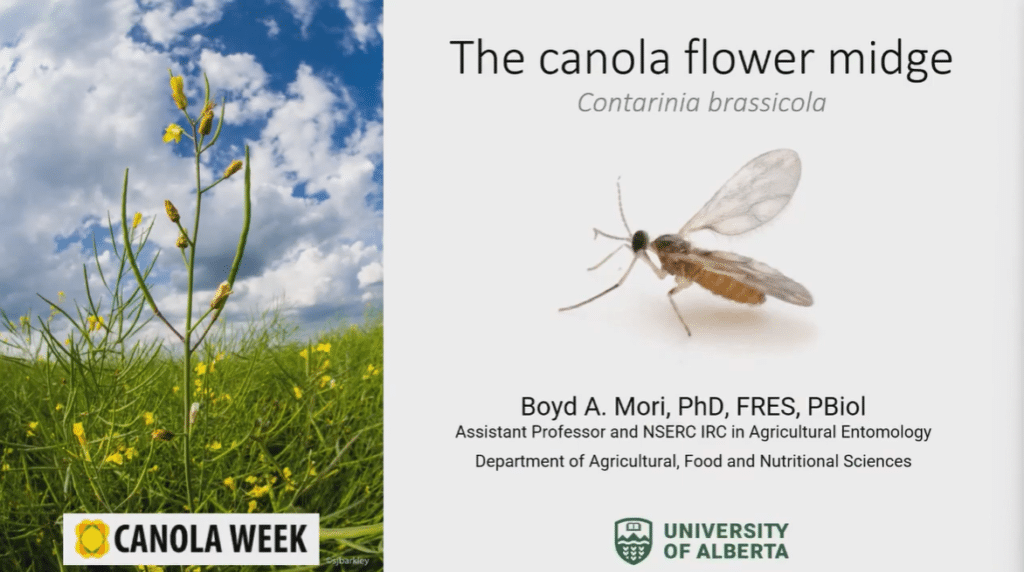Key Result
The newly discovered canola flower midge, C. brassicola, may be a species native to the Prairies. It is found across the canola-growing region, but population density, for the most part, is low and the midge has not had a significant impact on yield. This midge causes flower galls that result in aborted pods.
Project Summary
In 2016, Boyd Mori and colleagues discovered a new species of canola midge, Contarinia brassicola Sinclair (Diptera: Cecidomyiidae), in Saskatchewan and Alberta. At the time, nothing was known about its biology or potential impact on canola production.

The discovery of C. brassicola also raised questions about the presence of swede midge (Contarinia nasturtii (Kieffer), Diptera: Cecidomyiidae) on the Prairies. This project was initiated to:
- Determine the distribution of C. brassicola and swede midge.
- Describe the life history of C. brassicola and estimate its potential impact on canola yield.
- Use population genetics to determine the source of Contarinia sp. midges on the Prairies.
- Identify parasitoids of Contarinia sp. for biocontrol.
A survey of randomly selected canola fields was conducted in late July of 2017, 2018 and 2019. To establish the range of C. brassicola across the Prairies, 10 canola racemes at 10 locations in each field were examined for galled flowers, a known symptom of C. brassicola infestation.
All galled flowers were collected and returned to the laboratory. A portion of the flowers were used to collect larvae for population genetics analyses and larvae in the remaining flowers were reared to determine if they were parasitized.
As part of the field survey, canola plants were also examined for symptoms of swede midge damage and a network of swede midge pheromone traps was deployed in all three years of the project. Plant samples were collected during the growing season and examined for C. brassicola eggs and larvae and emergence cages were used to determine the timing of adult midge emergence.

The study determined that Contarinia brassicola is widely distributed across the Prairies (Figure 1), including the Peace River Region of Alberta. Its distribution appears to be correlated to the dark grey, black, and dark brown soil zones. In all three years of the project, the population density of C. brassicola was relatively low, and unlikely to have a significant impact on canola yield. However, at least two fields in 2019 had damage that likely resulted in economic loss of yield. Eggs are laid on or very close to canola flower buds. Larvae were only detected inside canola flowers.
Based on emergence patterns observed in cages in all three years of the study, the researchers believe that there are at least two generations of C. brassicola per year. This species may be able to prolong its diapause and pupal development in the soil, similar to swede midge (Hallett et al. 2009). Additional research is required to address this hypothesis.
There are at least two species of parasitoid that attack C. brassicola on the Prairies, however, parasitism rates were low and variable across the host’s range. Population genetics analyses revealed high genetic diversity across the known range of C. brassicola, suggesting that this may be a species native to the Prairies.
Overall, this project contributed to our knowledge of a new and potentially important pest of canola in western Canada. It also confirmed that there are presently no established populations of swede midge on the Prairies.





